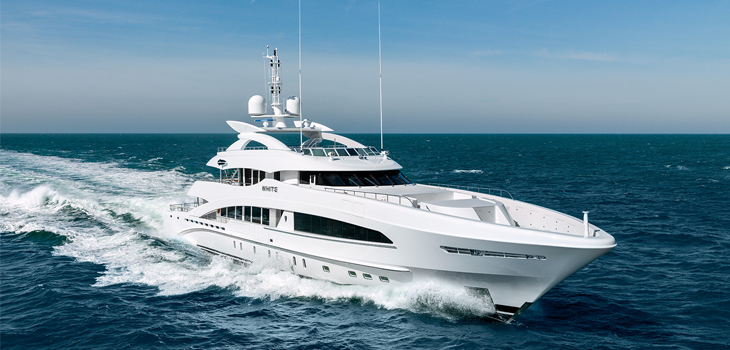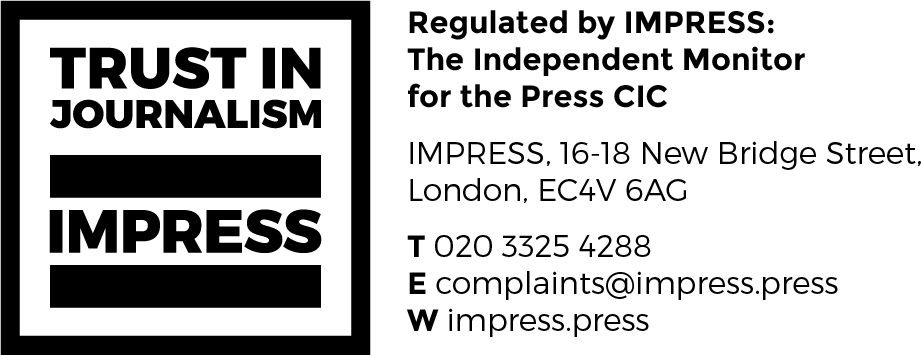Cybercrime is one the biggest emerging risks facing superyacht owners

As vessels become increasingly more technologically advanced, so do the criminals who can hack in and take control of the vessel’s telephone, CCTV, Wi-Fi and navigation systems in a matter of seconds.
They can also wipe out vast quantities of valuable data, steal highly sensitive material such as financial details or private photos and even hijack a ship or send it off course.
One billionaire had more than £100,000 stolen from his bank account while others have been blackmailed with compromising pictures. Some have been forced to pay a ransom to unlock their navigation systems.
“People on yachts are what cybercriminals call high-value targets,” said Malcolm Taylor, a former GCHQ officer who now heads up cybersecurity for private security firm G3. “They are wealthy, and money is what people want to steal or extort.”
Then there is the problem of crew posting photos and updates on social media, making it easy to find their addresses if they are streaming live on the superyacht’s Wi-Fi. In extreme cases it has led to kidnappings where criminals have located wealthy individuals, come on board and held them hostage.
“Our experience shows that extortion and ransomware-type attacks are the most frequent cause of cyber events,” Ben Lind, a superyacht insurance underwriter at AIG told Superyacht Investor: “As boats are becoming increasingly connected with the internet of things and smart technology this makes them more vulnerable to attack and brings with it more opportunities for hackers to exploit.
“That is only exacerbated by owners not changing their default passwords on new equipment and between/after charters. Plus, with this need to have greater connectivity and Wi-Fi signal strength throughout the boat, it is easier for hackers to access their systems from further away.”
If the vessel is also carrying personal data on the crew, owner and their guests, the owner is subject to the European Union’s new General Data Protection Regulation rules which came into force in May. If found to be liable in the event of a hack, they could incur a fine of up to four percent of their company’s annual global turnover.
Fire hazards
Robert Raymond, CEO of Superyacht Insurance, said that another big problem is fire. While the overall frequency is relatively low, he said that when incidents do occur they tend to be a devastating loss.
“There was an incident in Turkey last year where a $5-6 million yacht was moored up beside a $60-80m one and the smaller yacht caught fire and because the wind was blowing in that direction it spread to the bigger one and destroyed it,” he said. “Then there are collisions where vessels come into contact with the sea bed, foreign objects, marina docks and jetties and, of course, other ships, all of which are often caused by equipment failure.”
Peter Mellett, managing director of BankServe Insurance Services, said that as well as the perils of social media, guests invited onto a superyacht can present a big risk, particularly if they have been under the influence of alcohol. Then there are all the toys like jetskis and helicopters, he said.
“With more guests being invited on to boats these days and the propensity for people to do silly things, the likelihood for accidents is much higher,” he said. “All it takes is for someone to come on board and perform a crazy stunt and they end up having a horrendous accident and become a paraplegic for the rest of their life and you spend the next 10 years in court defending yourself.”
The biggest issue for Richard Hugg, managing associate at law firm Ince & Co, however, is windstorm damage, with losses across the market. That has caused some insurers to consider pulling out, he said.
“Some insurers were hit harder than others, of course. But it has brought the issue into sharp focus, in particular the appetite to write the class of business generally and how to mitigate the risk,” he said. “Real questions were asked about the value of hurricane plans, and the terms in which plans – or the requirement for them to be provided/satisfactory in nature – have been the subject of some debate.”
Cutting edge advances
Other risks, said Lind, are advances in boat design and technology. Then there are yachts travelling further afield, he added.
“We are seeing a lot of new features, particularly the greater use of glass in the design,” he said. “Designers are also pushing the envelope in rigging designs, which brings a greater risk because they are more complex to fix and, potentially, the repair costs are higher.
“Then owners are looking to go further afield with the development of expedition-type boats, often to remote areas. However, these plans need to be tempered with the logistics and costs of our actually going out there to rescue them and salvage and repair the boat.”
Despite all of these increasing risks, overall rates have continued to decline with many Lloyd’s syndicates who underwrite the policies exiting the market because of its unprofitability, thus reducing capacity, while the big brokers with large volumes have only added to that downward pressure. Lloyd’s itself has also been cracking down on underperforming sectors, including marine and hull and yachts, threatening its managing agents with closure if they don’t come up with an action plan to tackle the problem.
“The yacht market has been declining for many years now,” said Raymond. “Rates on older boats are down 0.25-0.3 per cent and if it continues in that way it will become unsustainable.”
Thin margins have also resulted in less money being available to pay claims, squeezing out many of the smaller insurers, said Raymond. The inefficiencies of the Lloyd’s underwriting process haven’t helped either, he said.
“The broker still needs to have a face-to-face meeting with the underwriter to place the business,” he said. “And it still takes days to make even the smallest changes to a policy because when you go there to see the underwriter you have to queue up and wait to be seen.”
Positive outlook
Mark Feltham executive director, marine and superyachts at Willis Towers Watson, said that the superyacht insurance market had been largely unprofitable for the past four years, exacerbated by the Caribbean hurricanes in 2017. But he added that he expects an increase in rates at the end of this year or the first quarter of 2019.
“The losses last year were just the tipping point,” he said. “Some of the losses were extremely high and broke the back of many insurers.”
Hugg added that some underwriters were also less prepared to offer add-ons and were rather looking to limit the scope of their cover, moving away from all-risks to named perils. That puts the burden on the owner to prove that one of the perils listed actually occurred, he said.
Mike Taylor-West, director, global markets – private client, marine and aviation at La Playa, said that while there has been a call for rate increases since the 2008 Credit Crisis, commercial market pressures were keeping prices down. Some underwriters who have a capacity agreement, however, have already been forced to increase rates.
“There’s a need for a correction, mainly because there isn’t enough money in the pot for claims,” he said. “Clients are being lulled into believing that lower rates are a good thing, but ultimately you get what you pay for.”
Another market source said: “These things tend to go in cycles. While it’s becoming increasingly hard to place $500-600m yachts because of the market’s contraction, the tide will eventually turn and prices will rise again.”
What superyacht insurance do you need?
Superyacht insurance can be tailored to meet your needs, but typically your coverage should include:
• Hull insurance to protect the yacht itself, covering the hull, machinery, equipment and fixtures and fittings on board, but can also be extended to include fine art and luxury items
• Protection and indemnity insurance to protect the owner’s legal liability against crew, guests and third parties; it can be combined with hull insurance
• Marine insurance covering crew and guests for personal accident, medical cover and salary protection in the event of an injury or illness
• Shipyard insurance to protect the yacht when it is undergoing a refit, maintenance and/or repair. But watch out for shipyard owners’ waivers of subrogation, absolving them of responsibility for losses or damages, except in cases of gross negligence and/or a willful act
• Insurance against war risks and piracy, kidnap and ransom, and career-ending insurance for professional yacht captains

